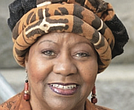Shine bright like a Diamond
RDP developers win $2.4B, 15-year, mixed-use project in baseball district
Jeremy M. Lazarus | 9/15/2022, 6 p.m.
After years of talk, Richmond is ready to launch the huge Diamond District redevelopment of 68 acres of mostly city-owned property in North Side
Monday night, City Hall announced the winner of a nine-month competition that drew 15 development teams eager to undertake the work.
The winner is RVADiamond Partners (RDP), 45 percent of whose members are Black-owned businesses, including the nation’s largest Black-owned investment bank, Loop Capital of Chicago.
As laid out in a support resolution headed to City Council, the winning team essentially envisions creating the equivalent of a small town over 15 to 20 years on the property that is bounded by Interstate 95, Arthur Ashe Boulevard, Robin Hood and Hermitage roads and railroad tracks to the south.
To be undertaken in four phases, the massive project is envisioned to involve $2.4 billion in new construction over time, create thousands of construction and permanent jobs and a host of other benefits, including a new minor league baseball stadium and a major construction training center in South Side.
One caveat: The city is likely to receive relatively little revenue for its general fund from the development for years to come, despite Mayor Levar M. Stoney’s claim that the project would generate $156 million in taxes over 30 years, or $5.2 million a year.
The reason: Virtually all of the new tax revenue the giant development is projected to create is to be devoted to paying off the debt for the projected $85 million stadium and to cover the cost of installing streets and underground utilities. Until the bonds are paid off, and that could take 20 years or more, those tax dollars cannot be use for any other purpose.
Even so, seven members of the council have endorsed the project and are prepared to vote Monday, Sept. 26, to approve the resolution to move the project forward.
Only Kristen Nye, 4th District, and Reva M. Trammell, 8th District, have not signed on to the next big thing for Richmond.
Having suffered rejection on previous big projects, including the Navy Hill development for Downtown and the casino in South Side, Mayor Levar M. Stoney now has a legacy project.
The Diamond District was first envisioned in 2005 by then City Council President William J. Pantele. During the administration of Mayor Dwight C. Jones, the city reported spending $19 million to clear buildings, relocate public operations and prepare the land for future construction.
Revived after being stalled for several years, the development is now seen as building on the existing boom in Scott’s Addition.
The Diamond District will not be done in isolation. A variety of projects are already in the works for private property surrounding the Diamond District, ensuring increased energy and activity.
As the resolution noted, ahead is the first phase, which the city stated is to result in nearly $630 million in development. The first phase involves 21 acres on the south side of the property for which the RDP is to pay $16 million.
That money would largely enable the city to recover the cost of clearing and relocating city and school system shops and other operations and cleaning the land.
RDP also is to pay $500,000 to reimburse the city for its costs of running the competition.
The company also has agreed to pay over time a total of $51 million for the remaining 47 acres, but only as RDP begins ad- ditional phases, according to the resolution.
Among the first elements is the replacement stadium that is to nestle the railroad tracks and Arthur Ashe Boulevard. The stadium is to accommodate 10,000 fans, and RDP must have it ready for play in 2025.
The Free Press has been told the stadium is projected to cost $85 million, though no figures have been made public. The new stadium is to be home to the minor league Richmond Squirrels and Virginia Commonwealth University baseball teams and also become a year-round concert and event venue.
Along with the stadium, the developers are planning an 11-acre park and a 180-room hotel, according to the resolution.
Other elements include 1,134 apartments, 20 percent of which are to be for lower-income people, with 20 for public housing residents with Housing Choice vouchers, and 92 for-sale homes, 18 of which are to be affordable for lower-income residents, the resolution notes.
In addition, the Free Press has been told the developers plan to work with the city and Richmond Public Schools to jumpstart a plan to turn a former Altria tobacco factory on Maury Street into a new technical center were students could learn construction skills. RDP is prepared to invest $40 million to get the overhaul of the factory moving, the Free Press has been told.
RDP also must make efforts to ensure unionized workers are employed, that construction workers are paid union-level wages and to give priority in hiring to Richmond residents team or subcontractors add people.
Along with Loop Capital, the major players on the team include Washington, D.C.-based Republic Properties Corp. and Henrico County-based Thalhimer Realty Partners. Thalhimer has already snapped up much of the available private property next door to this site and is making plans for other projects to complement the RPD work.
Black team members include Robert C. Bobb, a former Richmond city manager who runs a Washington-based consulting firm; artist Sir James Thornhill, a well-known muralist in Richmond; and the three co-founders of the Richmond Black Restaurant experience, Shemicia Bowen, Kelli Lemon and Amy Wentz. Kenneth Jones’ Prestige Construction Co. also will be part of the construction team for the stadium and other portions of the project.
Also, Michael A. “Mike” Hopkins will play a significant role.
Both of his companies, M Companies and Emerge Construction Group, will be involved in the project and he and will develop the for-sale housing, including the first 92 units of duplex-style units.
Mr. Hopkins said the list of Black participants is long and includes participants in virtually every aspect, from the surveyor team to an interior designer. Black architects and attorneys also will be part of this development.
“There has been a deliberate effort at inclusion,” he said.







